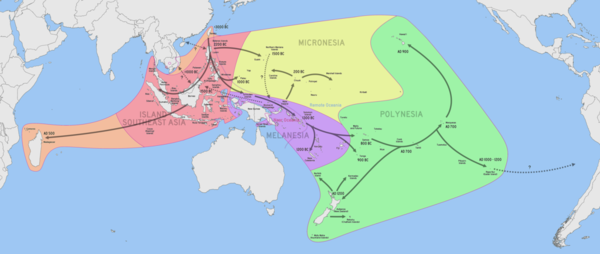The Austronesian expansion theory
The Austronesian Expansion Theory (also known as the Austronesian Migration Theory) suggests that the growth of the population of the Philippines is a result of a group of people from Asia known as the Austronesians.
The Austronesians are Austronesian-speaking people who have been found to populate areas in Southeast Asia, Oceania and East Africa. These include Taiwanese aborigines and the majority of people on smaller islands such as Micronesia and Melanesia. There are various theories that explain their spread across the world, including the Out of Taiwan model, but the Austronesian Expansion Theory builds on this to specifically attempt to explain the populating of the Philippines.
According to the theory proposed by Peter Bellwood, professor of Archaeology and Anthropology at the Australian National University, the Austronesians travelled into the Pacific 6,000 years ago from the Chinese mainland. First, they reached areas in and around China, which they managed to populate by 3,500 BC. After this, they began to travel further, and it was just 500 years later that they managed to reach the Philippines.
Of course, they didn’t stop there. After the Philippines had been reached, many Austronesians continued their travels, reaching Sumatra and Java by 2,000 BC, Northern New Guinea by 1,600 BC, Samoa by 1,200 BC, and Easter Island, Hawaii and Madagascar by 500 AD. However, the initial settlers left to establish themselves in the Philippines were, according to Bellwood, the first permanent residents the archipelago and the foundation of the population that thrives there today.

According to Bellwood, this theory not only explains how people came to settle in the Philippines, but also why there are so many similarities in terms of culture, physical features and language between so many distant countries.
Cultural similarities between the groups, for example, include the art styles and rituals they seemed to demonstrate, as well as some of the traditions they adopted, such as tattooing.
Language was a little more complex, with the two main branches of Austronesian languages (Malayo-Polynesian and Formosan) being split up into more than 500 further sub-branches. However, the fact that cultures as far removed in terms of distance as the Philippines and Madagascar shared elements of these languages does work in favour of Bellwood’s theory.
Today, there are 87 Austronesian languages still spoken in the Philippines, providing support for both Bellwood’s theory and the more general Out of Taiwan theory.
MLA Citation/Reference
"The Austronesian expansion theory". HistoryLearning.com. 2024. Web.
